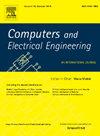基于关联感知莲花效应的分层对偶图神经网络攻击检测与网络恢复
IF 4
3区 计算机科学
Q1 COMPUTER SCIENCE, HARDWARE & ARCHITECTURE
引用次数: 0
摘要
软件定义无线传感器网络(SD-WSNs)的最新进展揭示了系统对未来网络物理攻击增强的敏感性。然而,入侵检测会产生一种绕过传统检测系统的异常行为。为了解决这些问题,相关莲花效应分层对偶图神经网络(CLEHDGNN)是一种保证对各种类型攻击进行正确分类的新方法。该方法利用关联敏感框架,有效地识别特征之间的关系,进行攻击检测。基于密度的空间聚类(DBSC)用于时间导向数据的聚类,而簇头的选择则通过粒子引导的元启发式算法(PGMA)来实现,以确保有效的聚类管理。该方法有助于促进和增强对新兴攻击模式的快速识别,从而提高检测精度和性能。该方法基于Lotus效应优化算法的集成,提高了对攻击的识别和分类能力。与现有技术相比,该方法的最高准确率为98.5%,f1评分为97.9%,精密度为98.6%,召回率为98.95%,特异性为99.6。总的来说,所提出的模型在增强网络物理系统的安全可靠性方面具有重要的潜力。本文章由计算机程序翻译,如有差异,请以英文原文为准。
Attack detection and network recovery using Correlation Aware Lotus Effect Hierarchical Dual Graph Neural Networks
The recent advancements in Software Defined-Wireless Sensor Networks (SD-WSNs) have revealed the susceptibility of the systems to future enhancement in cyber–physical attacks. However, intrusion detection creates an anomalous behavior that bypasses traditional detection systems. To address these problems, the Correlation Lotus Effect Hierarchical Dual Graph Neural Networks (CLEHDGNN) is a new proposed method to guarantee the correct classification of various types of attacks. This approach utilizes a correlation-sensitive framework is used to efficiently discern the relationships between features for attack detection. Density-Based Spatial Clustering (DBSC) is employed for clustering time-oriented data, whereas the selection of cluster heads is achieved through a Particle-Guided Metaheuristic Algorithm (PGMA) to ensure effective cluster management. This method serves to facilitate and enhance the rapid identification of emerging attack patterns for improved detection accuracy performance. This approach is based on the integration of the Lotus Effect Optimization Algorithm, which improves the identification and classification of attacks. The proposed method has shown astonishing results, reaching a maximum accuracy of 98.5%, F1-score of 97.9%, precision of 98.6%, recall of 98.95%, and specificity of 99.6 as compared to existing techniques. Overall, the proposed model holds significant potential for bolstering the reliability of security in cyber–physical systems.
求助全文
通过发布文献求助,成功后即可免费获取论文全文。
去求助
来源期刊

Computers & Electrical Engineering
工程技术-工程:电子与电气
CiteScore
9.20
自引率
7.00%
发文量
661
审稿时长
47 days
期刊介绍:
The impact of computers has nowhere been more revolutionary than in electrical engineering. The design, analysis, and operation of electrical and electronic systems are now dominated by computers, a transformation that has been motivated by the natural ease of interface between computers and electrical systems, and the promise of spectacular improvements in speed and efficiency.
Published since 1973, Computers & Electrical Engineering provides rapid publication of topical research into the integration of computer technology and computational techniques with electrical and electronic systems. The journal publishes papers featuring novel implementations of computers and computational techniques in areas like signal and image processing, high-performance computing, parallel processing, and communications. Special attention will be paid to papers describing innovative architectures, algorithms, and software tools.
 求助内容:
求助内容: 应助结果提醒方式:
应助结果提醒方式:


